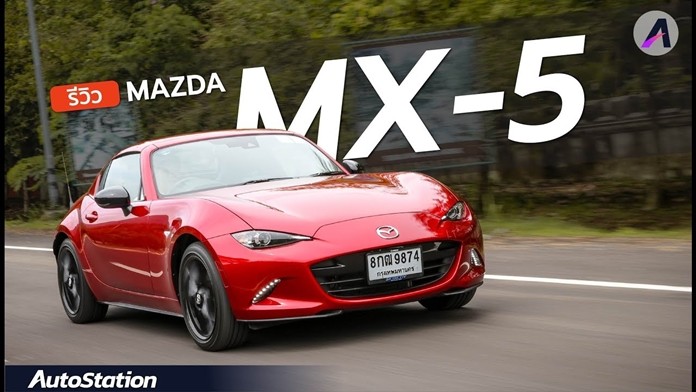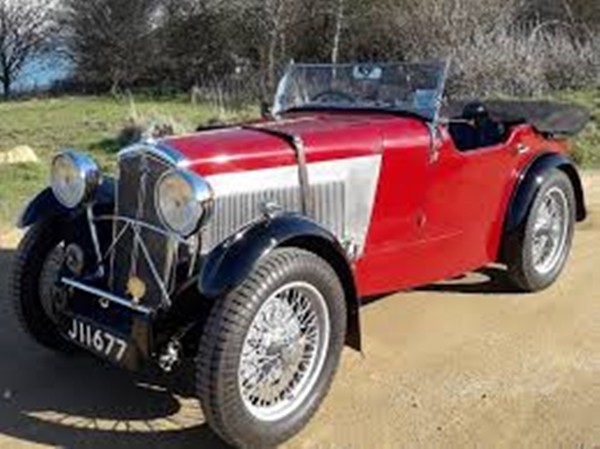Beijing (AP) — China’s leaders are promoting electric cars to help transform the country into a creator of profitable technologies, but sales are stalling.
That is squeezing automakers that are spending heavily on development as regulators shift the burden to them by imposing mandatory sales quotas. The wrenching transition is revealing the difficulty of luring mainstream buyers to a fledgling, expensive technology.
An industry shakeout lies ahead as novice Chinese producers that rushed into the market are forced to merge or close. Development costs are so high that global competitors including Volkswagen and Ford are teaming up to split the burden.
In November, purchases of electric and gasoline-electric hybrid SUVs and sedans tumbled 43.7 percent from a year earlier to 95,000, according to the China Association of Automobile Manufacturers. Sales for the first 11 months of the year were only up 1.3 percent at just over 1 million vehicles.
China accounts for half of electric vehicle sales worldwide, making any change in its market critical for the global industry.
In China, about 70 percent of the 1.2 million electric or gasoline-electric hybrid models sold over the past year went to government and company fleets. Almost 500,000 bought by consumers were in cities that offer incentives such as being exempt from registration fees or license plate waiting lists.
Industry analysts say one reason for the slump is that anyone who wanted an electric rushed to buy it before subsidies ended. Sales spiked 85 percent in April over a year earlier.
Under the new system, automakers must earn credits for selling electrics or buy them from competitors that exceed their quota.
State-owned utilities and other companies have blanketed China with charging points. The country’s biggest ride-hailing service, Didi Chuxing, says it is the biggest global operator of electric vehicles, with more than 600,000 in its fleet. A rival service launched by automaker Geely, called Cao Cao, says its entire 30,000-vehicle fleet in 30 cities is electric.
MX5 revisited

My daily driver in Australia in the 80s was a blood red Mazda MX5. Number plate was BNE 666, so it was known as the red devil of Brisbane. I clocked up 100K in that car and it proved itself to be very reliable. In fact, when I think about it, I cannot remember it ever letting me down. In my memory, it was one of my favorite cars of two decades ago.
By a strange series of coincidences, I found an acquaintance here in Pattaya with a red Mazda MX5 of the same vintage. Nostalgia got the better of me and I asked for first refusal, if he ever sold it.
This week, the owner contacted me to say he was going overseas for a while. Would I like to use his 17 year old MX5 while he was away? I ask you, is the Pope a Catholic?
So yesterday a blood red Mazda MX5 was dropped off at the hospital for me, immediately transporting me back to Brisbane of 20 years previously in my mind.
With a smile that would have taken a team of undertakers two weeks to remove from my face, I drove to the children’s school to run them home.
The first item of note was the MX5 was a very popular car with young teenage boys. The second item of note was my daughter’s flat refusal to get in to the car for the ride home, which with MX5 being a two seater would mean that either she sat on her brother’s knee or he sat on hers. As far as I was concerned, a little squeeziness was a small price to pay for the opportunity to time travel back 17 years. She did not share my enthusiasm.
With Miss getting a lift in more plebian transport, my 14 year old son and I headed to the Dark Side via Highway 7. My son is not a car person but he was enjoying the MX5 as we cruised through the afternoon’s traffic.
What became apparent was that the MX5 is so small compared to the ubiquitous pick-ups and towering busses congesting our roads that this gives a greater impression of speed. With our red car we were in Michael Schumacher’s Ferrari. Invincible.
My son became interested in the workings of the MX5, though calling the speedometer the “fast meter” is cringe-worthy. He was amazed at the number of dials, rather than bells, lights or warning whistles. And the gear lever connected to the manual gearbox he found intriguing. Millennials! They may be able to confound me with drop down menus, key strokes and Snapdragon, but I know how to shift gear and what the oil pressure gauge is there for.
What a short drive in the MX5 did for me, was to make driving a physical and mental pleasure again. I don’t know what I am going to do when the owner comes back!
How to super tune your Tesla
The amazing Elon Musk said technological advances were made to ensure a 10 percent improvement to performance to get the sub-3 second acceleration times.
“Instead of a standard fuse that just melts past a certain amperage, requiring a big gap between the normal operating current and max current, we developed a fuse with its own electronics and a tiny lithium-ion battery,” he said. “It constantly monitors current at the millisecond level and is pyro-actuated to cut power with extreme precision and certainty.
“That was combined with upgrading the main pack contactor to use Inconel (a high temperature space-grade super-alloy) instead of steel, so that it remains springy under the heat of heavy current. The net result is that we can safely increase the max pack output from 1300 to 1500 Amps.”
So now you know. Obviously if you are having problems with your Tesla, you take it to the Tuk-Com electronic counters, and not your average auto workshop!
Looking for a classic?

Sometimes Thailand isn’t the best place (sigh). I have been very lucky to receive several issues of “The Automobile” magazine from an enthusiast here. The publisher is Douglas Blain, a man who owns a Pegaso Z102. He is a true enthusiast.
And it is apparent that there are many true enthusiasts in the UK. The magazine has adverts offering classics, true classics, and my 20 year old Daihatsu Mira doesn’t quite make the cut.
A one page advert from the Tom Hardman company has:
1926 Austin 7 Burghley
1926 Humber 12/25
1927 Alvis 12/50
1929Lancia Lambda
1932 Wolseley Hornet
1933 Alvis Firefly
1934 Lagonda Rapier Le Mans
1935 Riley Imp
1935 Riley Falcon
1935 MG Bellevue Monoposto
These ranged in price between GBP 21,000 to GBP 78,000, and there are pages and pages of advertisers, all with cars around 80 years of age. Will a Toyota Fortuna ever become a collectors’ item? I think not, even if you put one in a hermetically sealed chamber to be opened in 2095 and leave it to your grandchildren in your will. It would never be advertised like the 1934 Lagonda as being “perfect for European tours with its ample luggage space. A very usable Lagonda Rapier with an extremely attractive price.” And the extremely attractive price? Try GBP 57,000. That’s around three million Thai baht.
We will never see anything like that in Thailand. The most “exotic” car for sale in the Pattaya Mail recently was a 2002 BMW 525i.
And with the latest legislation banning the import of cars, perhaps you should dry store your Fortuner.
The dogs that ate cars
I had a good mate called Alan. Came from the UK and was a serious bike rider. The sort of serious bike rider who goes to the Isle Of Man every year, rain, hail or snow, and you can be guaranteed to get at least two of those options. Alan died a couple of years ago, and even had his ashes spread on his favorite corner of the course. Alan was a good bloke, though a little over the top with dogs.
He had two, one called ‘Needle Nose’ which was supposedly a Doberman, and the other a giant mutt of a dog, a Rottweiler. Collectively, I reckon they had about as much brain power as my kitchen tap, but then I’m not really a dog guy.
One day I found him standing knee-deep in dog as usual, but peering at the rear bumper of his Honda Jazz. Or I should say, where the dogs had eaten the rear bumper of his Honda Jazz. I kid you not, the damn dogs had eaten the left side of the bumper where it (used to) join on to the body, the metal of which now also had canine dental records.
You see, this was not their first attempt at eating cars. Previous attempts included one car tyre, while still attached to the vehicle, and another episode where they ate the seat and the electrics and fuel injection hoses off his motorcycle. Puts a new complexion on the term “omnivore” doesn’t it?
Now that tale does have some importance in this week’s column, because have you noticed just how today’s bumper bars just fall off the vehicles they are supposed to protect from minor bumps? Come on, that’s why they were called “bumper bars” in the first place. So, how many cars have you seen recently with tape holding the bumper bar in position, both front and rear bars? Lots, is the answer.
Of course, that is referring to new or nearly new cars. Old cars had two dumb irons out the front, attached to which was something about the size of a piece of railway line, but it was chromed. It was bolted in place and it took three days soaking in oil before you could get the nuts to move. Those were real “bumper bars” made of steel, none of this newfangled plastic stuff.
And when you think about it, just how much use is the thermoformed plastic as a bumper? About as useful as a hip pocket in a swim suit. The slightest “bump” when parking, and the retaining clips all fly off and the so-called “bumper” falls on the ground. In theory, if you could get some new clips, you should be able to affix said bumper back on the car, but like all good theories, they don’t always work in practice. New clips as a single item do not exist. They come with a new bumper, they tell me. And we were all led to believe that the new bumpers would be so much cheaper than repairing the old metal ones, with all that beating and rechroming. However, I must say that a new one is definitely quicker to replace – provided the clips came with it.
 |
 |
 |





